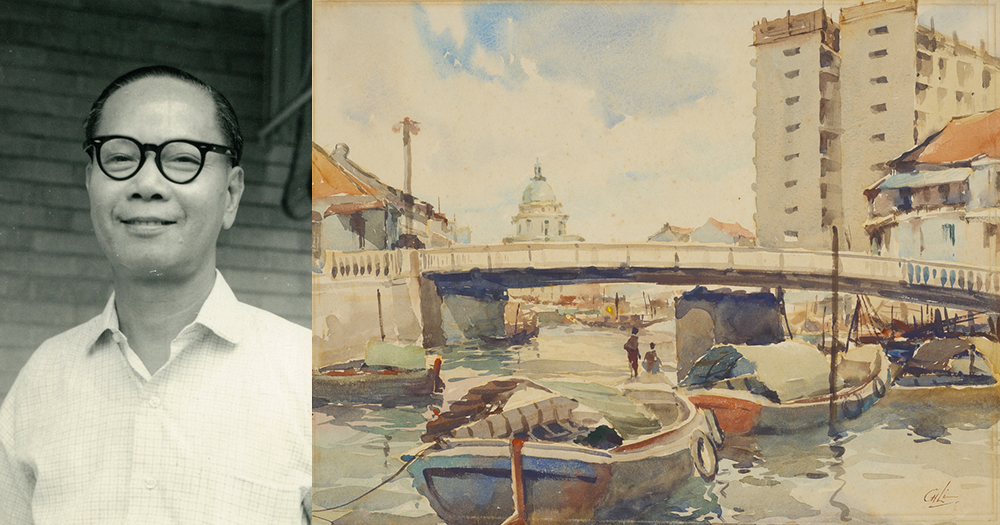Chances are, you might not have heard of Lim Cheng Hoe.
But it's thanks to him and his pioneering work in watercolour painting in Singapore that we now have an insight into what our country looked like before colour cameras became a mainstream thing here.
Here's his story —
This is Lim Cheng Hoe:
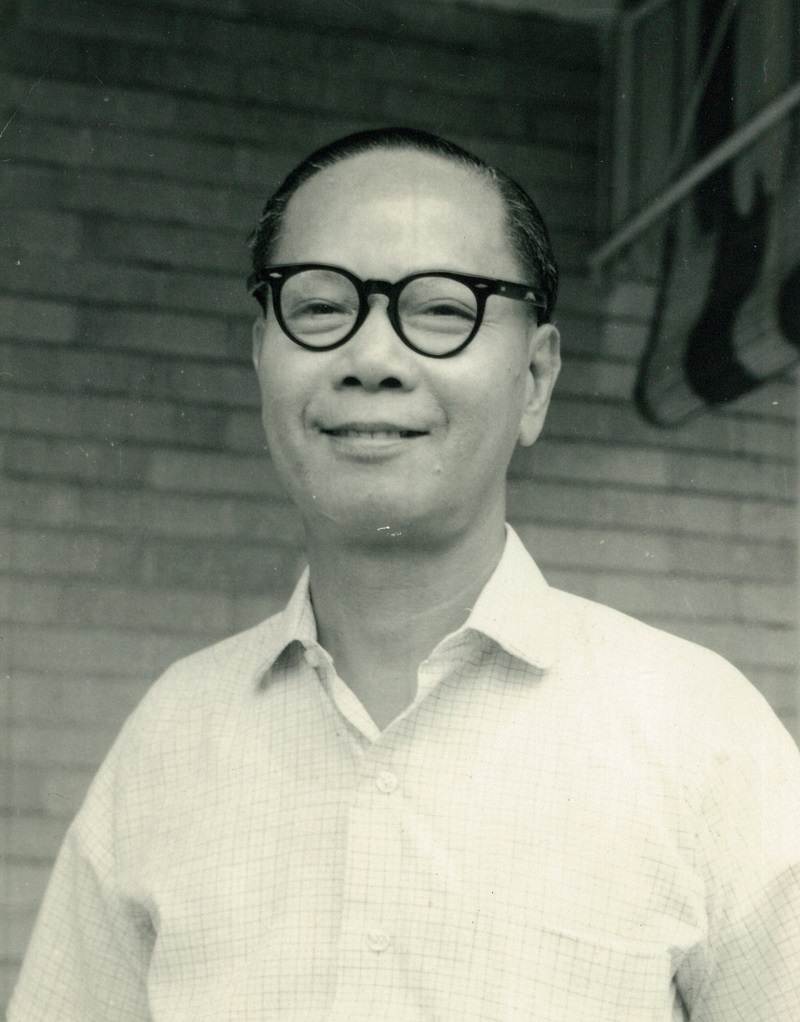 Source: National Gallery Singapore website
Source: National Gallery Singapore website
Like many of our pioneer citizens, Lim, originally born in Xiamen, China, came to Singapore with his family when he was seven years old, in 1919.
His dad enrolled him in Raffles Institution from 1928 to 1932, keen on Lim having an English education.
[related_story]
There, Lim was taught by Richard Walker, Singapore's first art inspector of schools, from 1930 to 1932, who was so impressed by Lim's talent that he proposed drafting a letter to the Royal College of Art in London for Lim to pursue his art education overseas.
Lim did not accept the offer, however, as his family could not afford it.
Largely a self-taught artist
Instead, Lim stayed in Singapore and found a job as a clerk in the Public Works Department (PWD) — the predecessor to PUB — until his retirement in 1966.
While Lim would receive informal art lessons from Walker in the three years after he graduated from RI, he was ultimately a self-taught artist who did much of his own self-study, practice and experimentation to develop his own style.
Prior to the Japanese Occupation, Lim's works focused heavily on natural landscapes, with an emphasis on accuracy of detail.
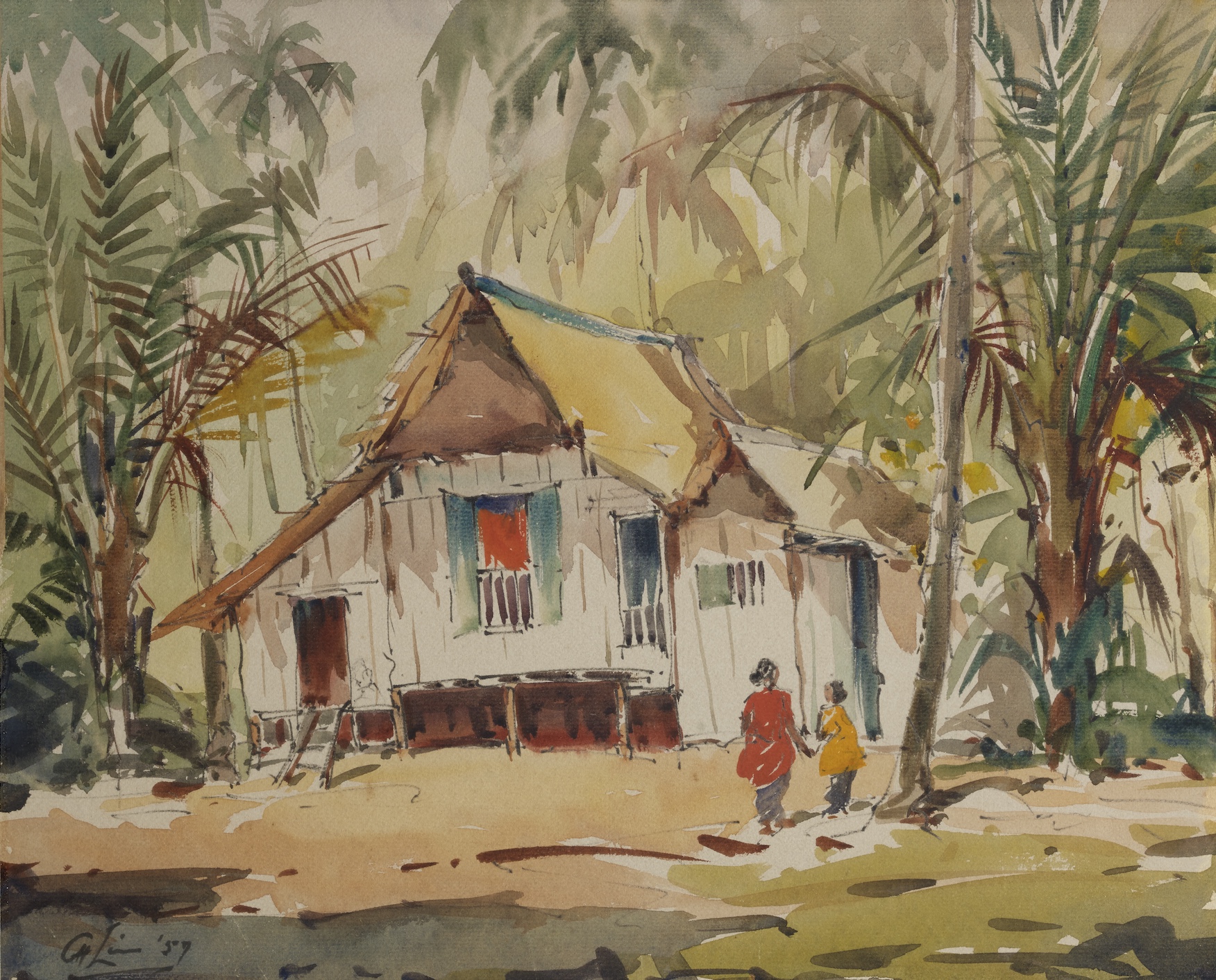 [Not titled] (Kampong House with Two Figures). 1957. Watercolour on paper. 36 x 44 cm. Collection of Fermin Diez and Su-Yen Wong. © Family of Lim Cheng Hoe.
[Not titled] (Kampong House with Two Figures). 1957. Watercolour on paper. 36 x 44 cm. Collection of Fermin Diez and Su-Yen Wong. © Family of Lim Cheng Hoe.
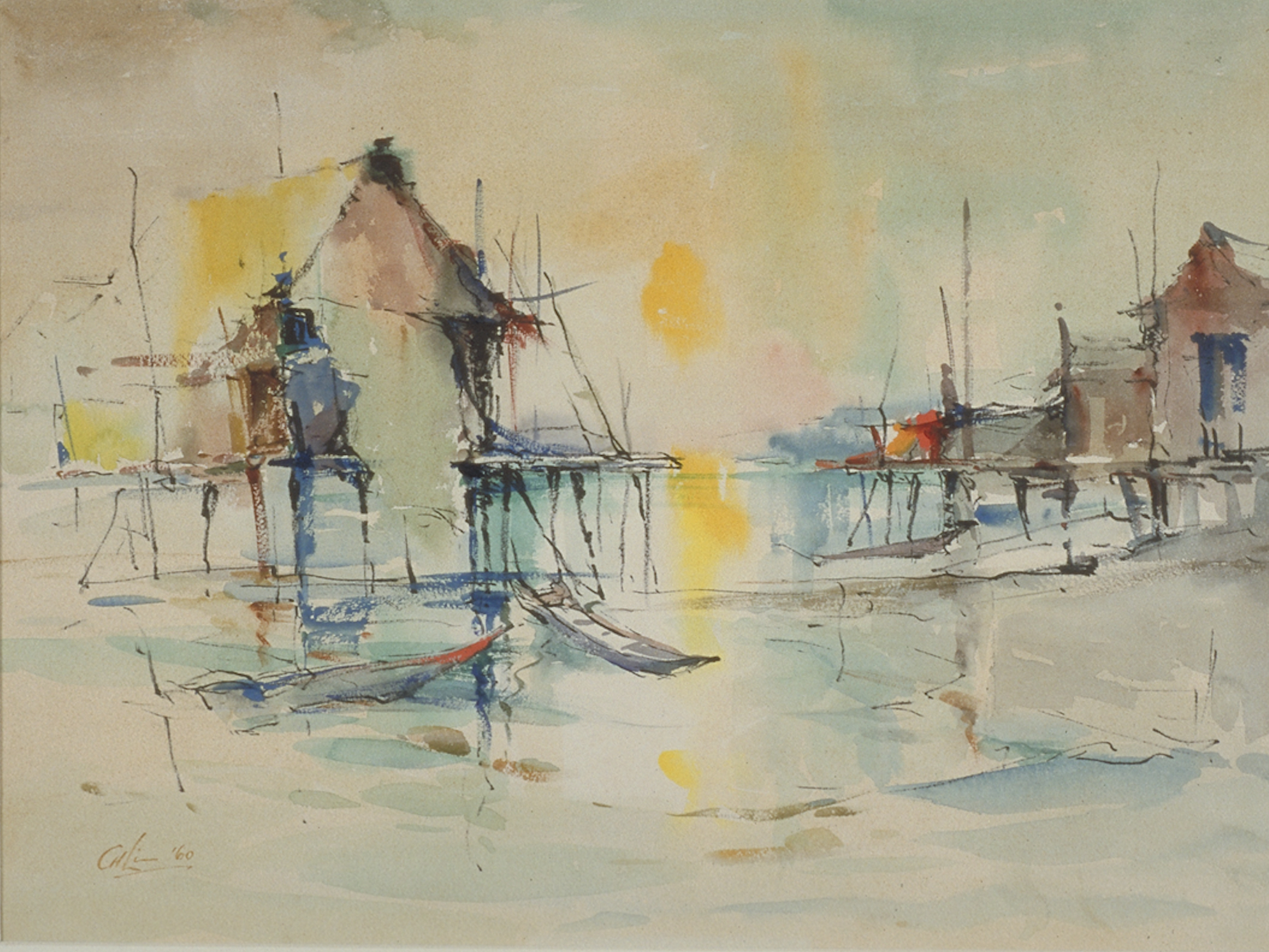 Nocturne. 1960. Watercolour on paper. 39 x 52 cm. Collection of National Gallery Singapore. © Family of Lim Cheng Hoe.
Nocturne. 1960. Watercolour on paper. 39 x 52 cm. Collection of National Gallery Singapore. © Family of Lim Cheng Hoe.
Those years (1942 to 1945) would turn out to be a dry spell, though, and Lim would only start painting again after the war had ended.
But he certainly made up for lost time afterward. Lim developed his own style further by reading publications on art, and socialising with other artists at the Singapore Art Society and Young Men's Christian Association (YMCA).
This eventually resulted in the emergence of an informal group in the 1950s known as the "Sunday Painters", which saw Lim and other artists travelling around Singapore every Sunday searching for suitable sites to paint. The locations they chose included the Singapore River, the Merdeka Bridge, Chinatown, various kampongs and sites along the seaside.
Afterward, they would critique each other's artworks in order to help each other explore different approaches towards art.
Painting the changes of Singapore
Accordingly, the years from 1955 to 1965 have been hailed as "the golden period of Lim's creative life" as he captured Singapore going through great change -- a Singapore moving toward decolonisation, self-governance and independence amidst the throes of urbanisation and industrialisation.
From this period onwards, Lim captured a wide variety of subjects in his paintings, ranging from kampongs, hilltop views and fishing villages to boat traffic on the Singapore River, land reclamation and construction sites.
His expressive use of watercolours also captured his feelings about man's relationship with the environment.
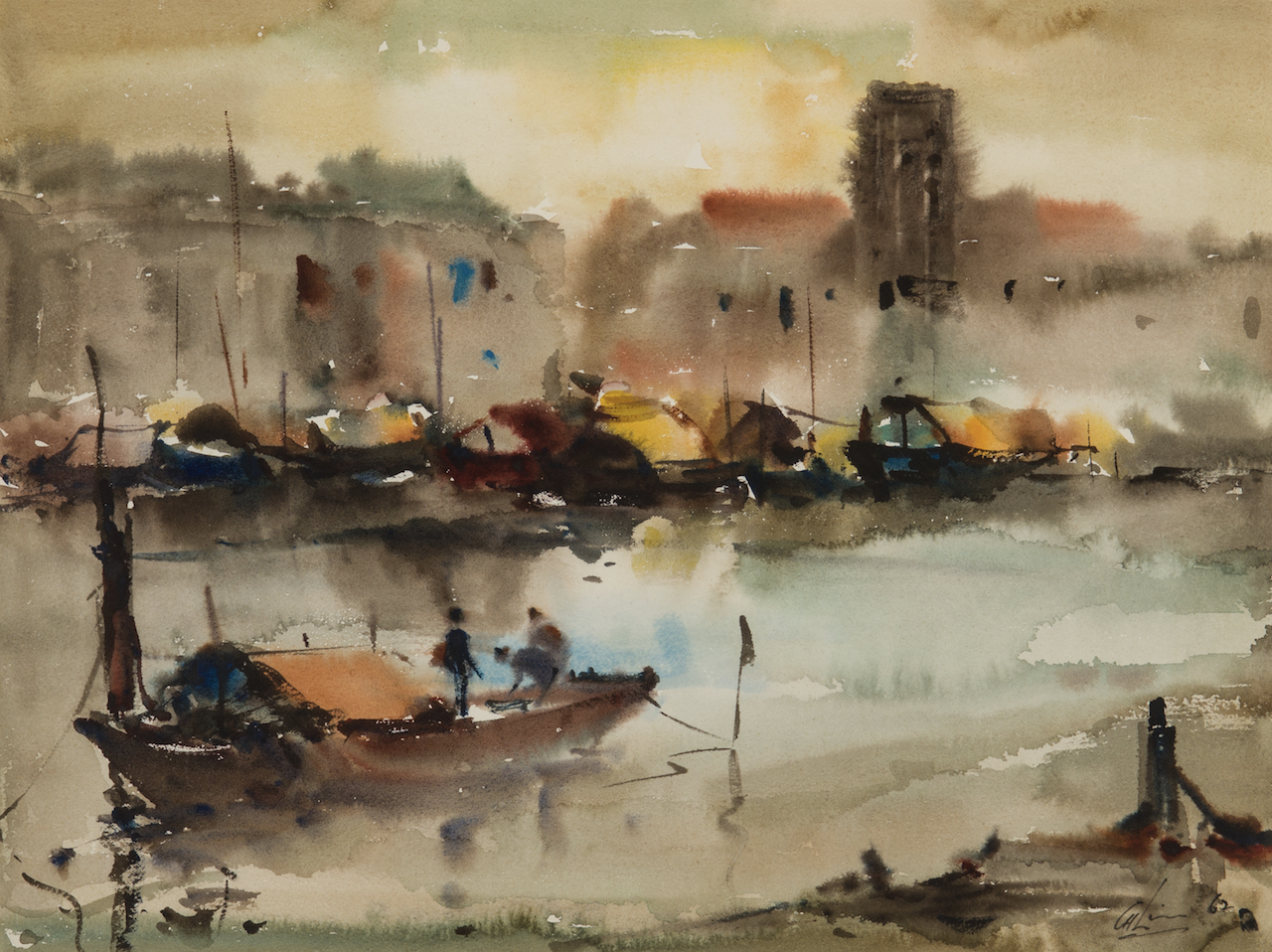 Singapore River. 1962. Watercolour on paper. 33 x 43 cm. Collection of National Gallery Singapore. © Family of Lim Cheng Hoe.
Singapore River. 1962. Watercolour on paper. 33 x 43 cm. Collection of National Gallery Singapore. © Family of Lim Cheng Hoe.
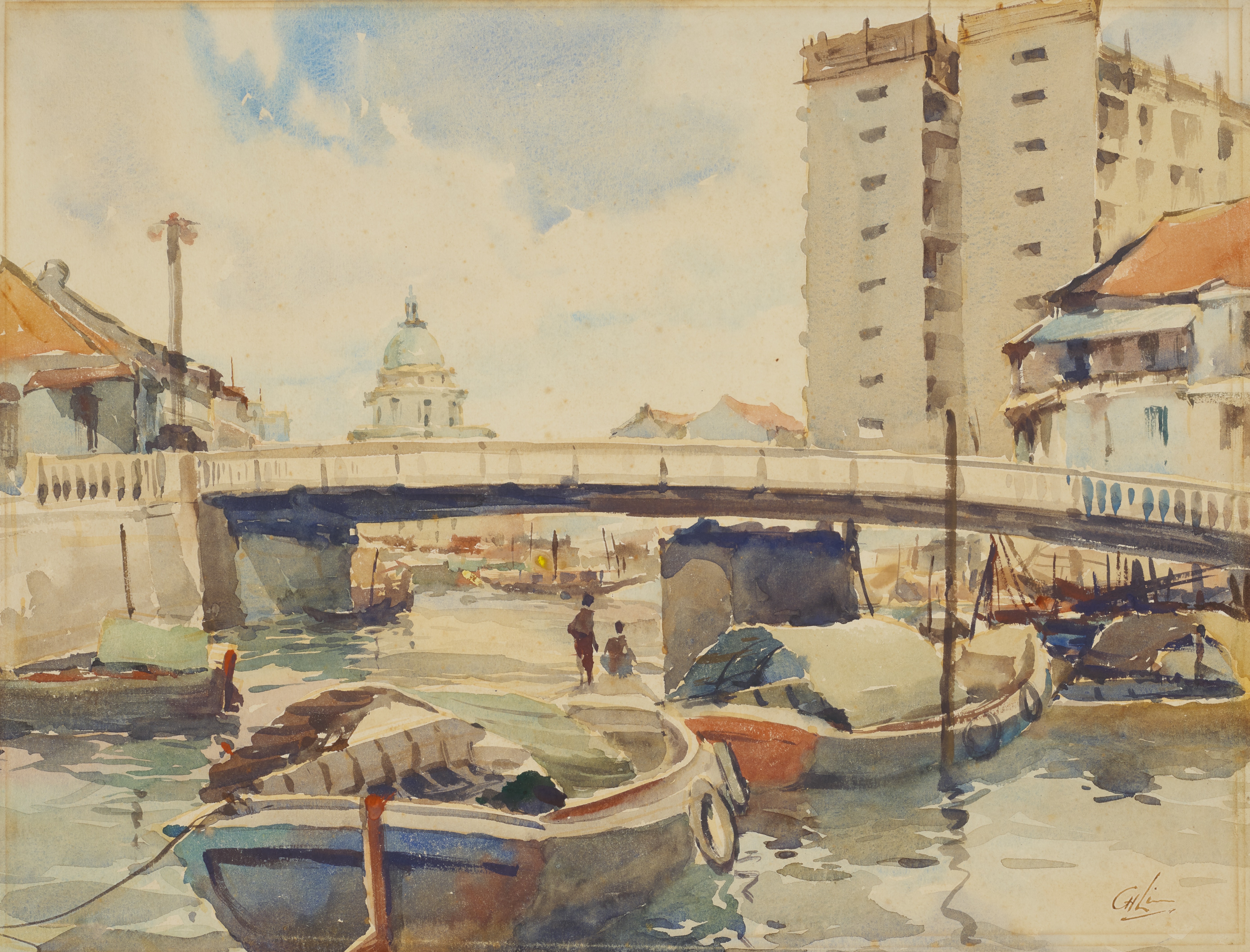 [Not titled] (Pulau Saigon with a view of Supreme Court). 1971. Watercolour on paper. 36 x 48 cm. Gift of Low Cheng Hock. Collection of National Gallery Singapore. © Family of Lim Cheng Hoe.
[Not titled] (Pulau Saigon with a view of Supreme Court). 1971. Watercolour on paper. 36 x 48 cm. Gift of Low Cheng Hock. Collection of National Gallery Singapore. © Family of Lim Cheng Hoe.
Founding the Singapore Watercolour Society (SWS)
Lim subsequently came to be a founding member of the Singapore Watercolour Society, together with some of the artists who comprised the "Sunday Painters" group.
The group was founded with the following four main objectives:
- To pass on to the next generation the practice of watercolour painting in Singapore
- To foster a conducive environment for professional watercolourists to share ideas and build relationships
- To assist watercolourists in developing new techniques and styles, and
- To promote watercolour painting in Singapore.
Currently, the Society carries on the group's original tradition of largely self-taught artists meeting on Sunday to paint outdoors and critique each other's artworks, so as to expose newer artists to the work of more established artists in order to let them learn more about the art form.
Lim continued painting different Singaporean landscapes all the way into the 1970s. Some of his artworks became increasingly abstract through the use of limited colours to create vibrant scenes through a variety of brushstrokes.
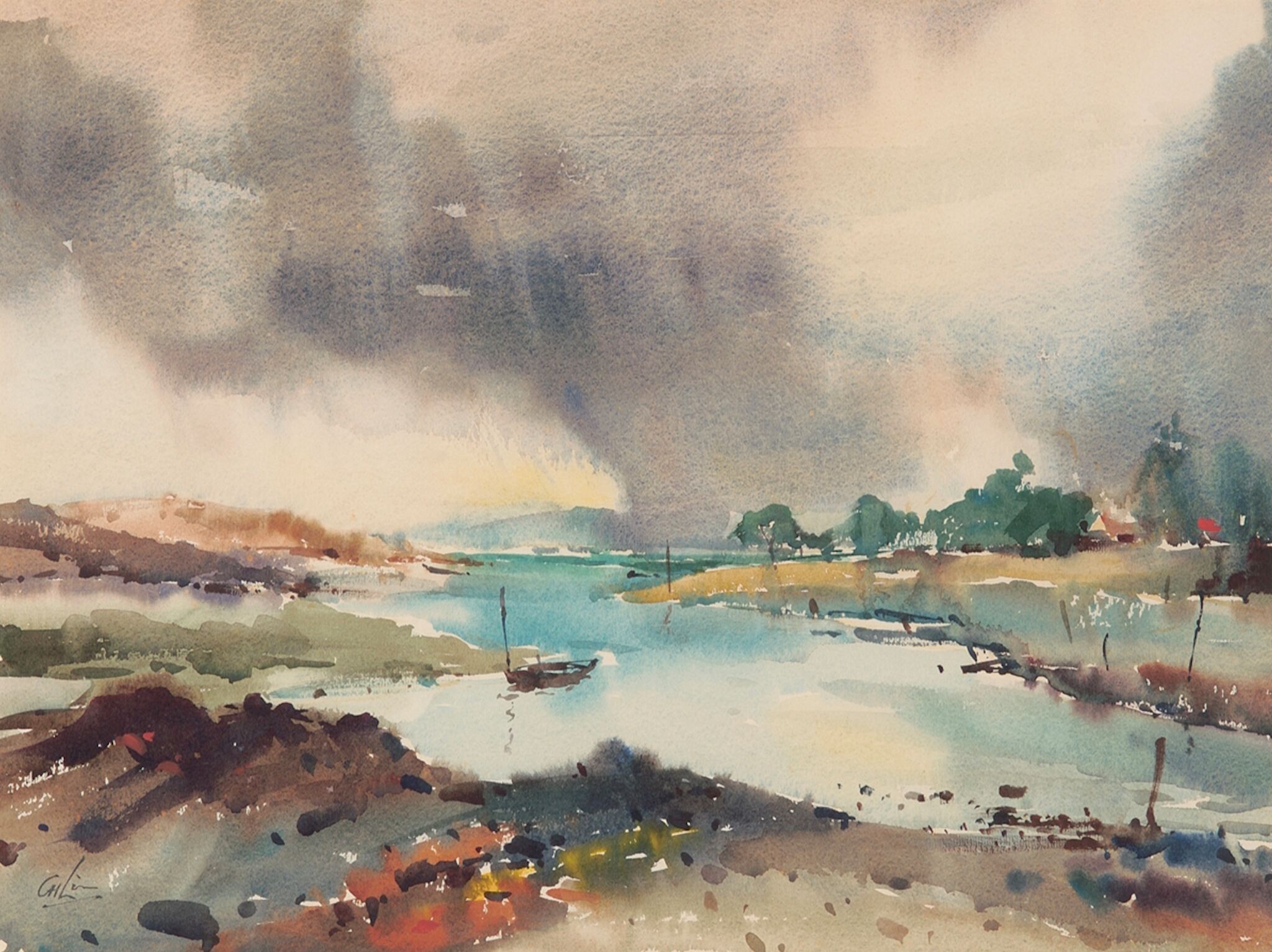 The Estuary. c.1970. Watercolour on paper. 37.5 x 51 cm. Gift of Michael Lim Hock Ann. Collection of National Gallery Singapore. © Family of Lim Cheng Hoe.
The Estuary. c.1970. Watercolour on paper. 37.5 x 51 cm. Gift of Michael Lim Hock Ann. Collection of National Gallery Singapore. © Family of Lim Cheng Hoe.
Lim Cheng Hoe: Painting Singapore runs from August 2, 2018, to June 9, 2019 at the National Gallery Singapore. Admission to this exhibition is free, as is entry to the museum, unless you are a non-Singaporean or non-Permanent Resident however, in which case you will still need to pay $20 to enter the museum.
The exhibition will showcase Lim's works, from the time he started in the 1930s, all the way to the 1970s, as he captured the changing landscape and people of Singapore across four decades.
Top image from National Gallery Singapore
If you like what you read, follow us on Facebook, Instagram, Twitter and Telegram to get the latest updates.
